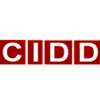Retroviruses are RNA viruses that integrate into the genome of the cellsthat they infect , which are typically of the hematopoietic cell lineage, as part of their normal life cycle. Rarely, a retrovirus is able to infect a germ cell, which results in all cells carrying the viral genome in that animal and its progeny. Up to 10% of mammalian genomes are composed of vertically transmitted, endogenous retroviruses. While infectious retroviruses are associated with diseases spanning from immunodeficiency to cancer, endogenous retroviruses can additionally induce substantial physiological changes in the host, such as structural modification of the genome or altered gene regulation.
Recently, a research team led by CIDD researchers Professor Mary Poss and post-doctoral researcher Daniel Elleder identified a new gammaretrovirus in mule deer using metagenomic and metatranscriptomic approaches. By applying molecular biological tools, they found significant variation in the position of integrations in each genome. The virus, called Cervid endogenous retrovirus (CrERV), is transcriptionally active and about half of all integrated proviruses maintain full length genomes. Taken together, these results suggest a recent introgression of CrERV, an unusual finding since most known endogenous retroviruses integrated millions of years ago and are fixed in a species. The discovery of a recently integrated endogenous retrovirus presents exciting and novel opportunities to observe the molecular and evolutionary interactions between mammalian host and colonizing retrovirus.
Publication Details
Elleder D, Kim O, Padhi A, Bankert JG, Simeonov I, Schuster SC, Wittekindt NE, Motameny S, & Poss M
Polymorphic integrations of an endogenous gammaretrovirus in the mule deer genome
Journal: Journal of Virology
86: 2787-2796
DOI Reference




